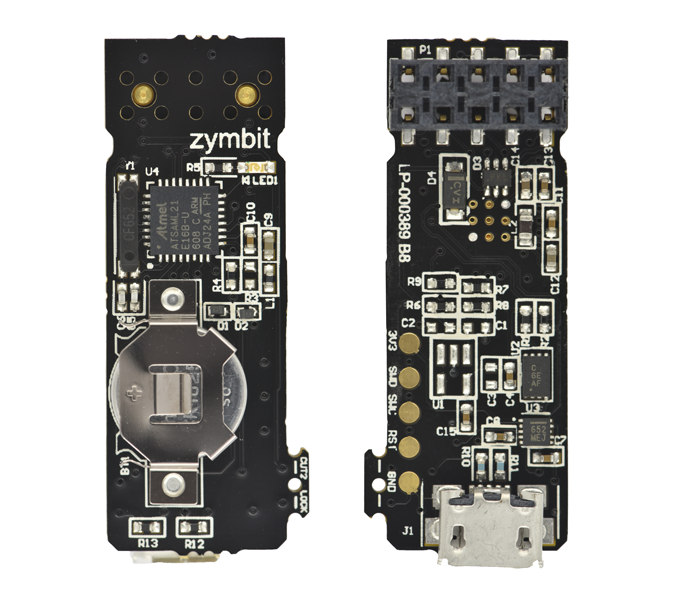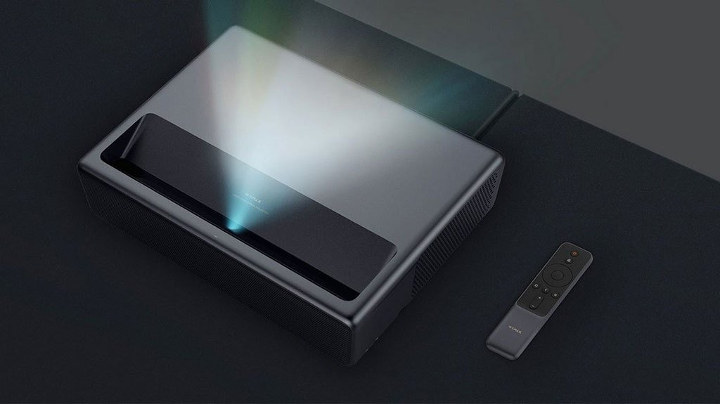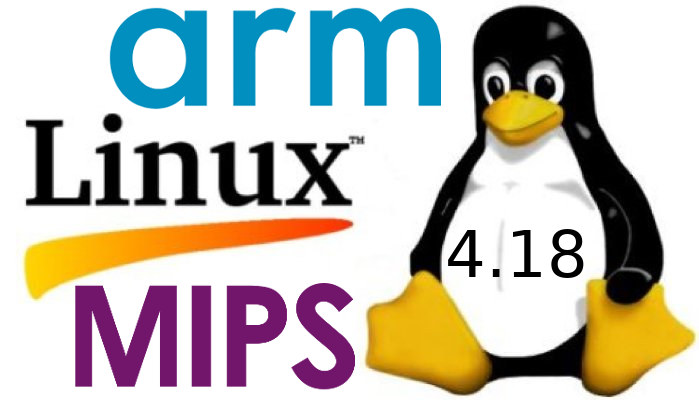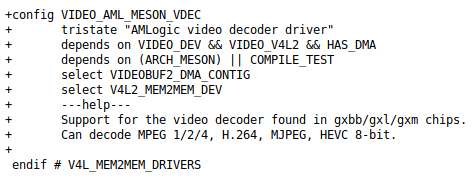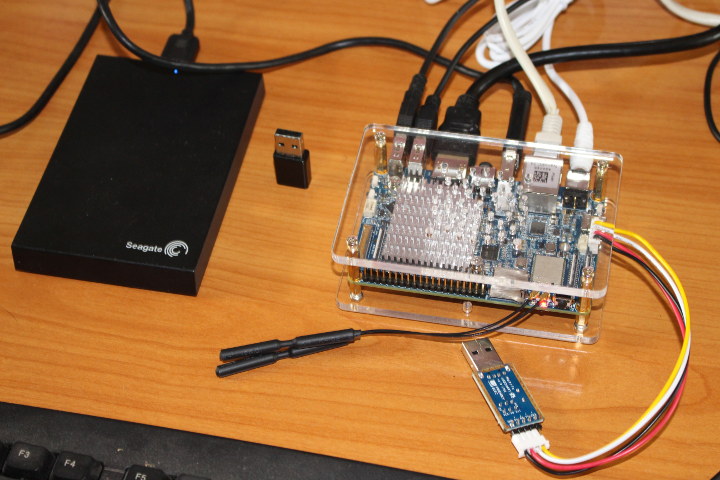Microchip ATECC508A CryptoAuthentication chip appears to be a popular way to add hardware encryption support to development boards, as we’ve seen previously with 96Boards’ Secure96 mezzanine or LoRa explorer kit, and even just earlier today with Analoglamb Fish32 Seed ESP32 education board. Another solution is from Zymbit which provides Zymkey security modules for Raspberry Pi based on the ATECC508A CryptoAuthentication chip in different form factor: either a USB stick, an I2C module, or for further integration into your own design, an SMT component. Zymkey enables multifactor device ID & authentication, data encryption & signing, key storage & generation, and physical tamper detection. It also features a secure element root of trust, a real-time clock, and a true random number generator (TRNG). The company provides a simple Python or C/C++ API to make it easier to add Zymkey support to any Linux application, and the secure module can be integrated with […]
Android 9 Go Edition Uses Less Storage, Boots Faster, and Improves Security
Android Go Edition was first launched with Android 8 (Oreo) in order to provide an operating systems and Google apps optimized for low-end hardware with less than 1GB RAM. Since then more than 200 Android Go smartphones have been introduced in over 120 countries for as low as $30. Follow the release of the “full” Android 9.0 Pie operating system last week, the company has now announced Android 9 Go Edition with several new features. Android 9 Go Edition brings the following improvements at the OS level: Up to 500MB extra storage – So as shown above you may have 5.5GB free instead of 5.0 GB in Android 8 in a phone with an 8GB flash. Faster device boot times Better security features like verified boot Dashboard for tracking and monitoring data consumption The company also made several improvements to Google Go apps with for example, Google Go being able […]
More Speculative Execution Exploits – Meet Foreshadow / L1 Terminal Fault
Speculative execution is a feature to speed up performance of recent processors which works by predicting and loading likely future instructions ahead of time. The features became somewhat famous a few months ago with Meltdown and Spectre vulnerabilities exploiting the features. The exploits impact Intel, AMD, Arm, and other processors to various degrees, and since the feature is built-in into the hardware, there’s no easy fix, and instead operating systems vendors, cloud service providers, hosting services and other stakeholders implemented mitigations. While a lot of progress has been made, work is still going on with the just released Linux 4.18 still getting some code changes related to the exploits. But just as solutions were found for Spectre and Meltdown, a new speculative execution exploitation has raised its ugly head: L1 Terminal Fault also known as Foreshadow. The new flaw appears to be just as serious, and a dedicated website has […]
Xiaomi WEMAX ONE Android Laser Projector Features Amlogic T968 Processor
We’ve previously covered some entry-level mini Android projectors like Rikomagic R5 or Nebula Capsule, but Amlogic T968 powered Xiaomi WEMAX ONE ultra short throw Android laser projector is a different beast entirely as it sells for $1949 shipped on GearBest. You can lower the price somewhat ($20 discount) with coupon IT$CN33WMX. Xiaomi WEMAX ONE (FMWS01C) projector specifications: SoC – Amlogic T968 quad core Cortex-A53 @ up to 1.8GHz with Arm Mali-T830MP GPU System Memory – 2GB DDR3 Storage – 16GB eMMC Flash Projector Details 0.47 inch DMD Resolution – Full HD ( 1920 x 1080 ) with support for HDR and 4K resolution somehow Light source – ALPD 3.0 (Advanced Laser Phosphor Display) Brightness – 1688 ANSI lumens (Claims of 7000 ANSI lumens in GearBest and other websites in English appear to be false) Color gamut – NTSC 80 – 85 percent Central contrast – 2500 : 1 – 3500 […]
Linux 4.18 Release – Main Changes, Arm and MIPS Architecture
Linus Torvalds has just announced the release of Linux 4.18: One week late(r) and here we are – 4.18 is out there. It was a very calm week, and arguably I could just have released on schedule last week, but we did have some minor updates. Mostly networking, but some vfs race fixes (mentioned in the rc8 announment as “pending”) and a couple of driver fixes (scsi, networking, i2c). Some other minor random things (arm crypto fix, parisc memory ordering fix). Shortlog appended for the (few) details. Some of these I was almost ready to just delay to until the next merge window, but they were marked for stable anyway, so it would just have caused more backporting. The vfs fixes are for old races that are really hard to hit (which is obviously why they are old and weren’t noticed earlier). Some of them _have_ been seen in real […]
Amlogic Open Source Video Decoder Driver Coming Soon for S905, S905X and S912 Processors
Allwinner processors aren’t the only ones getting an open source hardware video decoding / encoding support in Linux, as Maxim Jourdan recently submitted a patchset to Amlogic Linux mailing list adding a video decoder driver to some Amlogic processors. The driver is written around the V4L2 M2M framework and currently supports MPEG 1/2/4, H.263, H.264, MJPEG, and (partially) HEVC 8-bit codecs. The driver has been tested with FFmpeg, GStreamer, and Kodi, and currently works on S905 (Meson GXBB), S905X/W/D (Meson GXL), and S912 (Meson GXM) processors. Those processors also support HEVC 10-bit, VP9, and VC1 codecs, and while those are implemented yet, they should be in the future. A separate commit adds support for “Overlay plane for video rendering” which support various YUV layouts and a non-alpha RGB32 layout, and will be useful for Kodi and LibreELEC ports. I came to learn about those two patchsets thanks to Neil Armtrong […]
NanoPC-T4 Review with Android 7.1 Firmware
NanoPC-T4 is one of the many Rockchip RK3399 SBCs now available, and as we’ve seen in the “unboxing review” the company sent me two samples. So far, I’ve been reviewing RK3399 boards with Linux distributions in posts such as “Checking Out Debian and Linux SDK for VideoStrong VS-RD-RK3399 Board” and more recently “AIO-3399J Development Board Review with Ubuntu 16.04“. But in this NanoPC-T4 review, I’ll switch to Android, specifically Android 7.1, as I’ll soon try Android 8.1 on Firefly-RK3399 which might make for an interesting comparison between the two versions of the OS, before switching to Linux with Pine64 RockPro64 board which I received yesterday. First Boot with NanoPC-T4 Development Board I had already assembled the board in the first part of the review, so I just added the two WiFi antennas, the optional USB to serial debug board, and connected various accessories and cables from left to right: USB […]
How to Build an Orange Pi Zero LoRa Gateway
LoRa gateways tend to be fairly expensive, especially because of the radio part, but anything that may help lower the cost is probably welcomed. And one way to to do that is to use dirt cheap boards like Orange Pi Zero as Edzelf did, by combining the low cost Arm Linux board ($15 shipped) with Rak wireless RAK831 concentrator module kit ($143) via a custom cable, and a power supply board. All assembled into a metal case. RAK831 communicates with Orange Pi Zero over an SPI connection. While some other Orange Pi boards are suitable for the project, note that Orange Pi Zero Plus lacks a spare SPI interface, and can’t be used with this particular application. A fan was also added for cooling, a well as a USB serial debug board for debugging purpose, but it can be removed once the gateway is in the field. Software-wise, Edzelf installed […]


